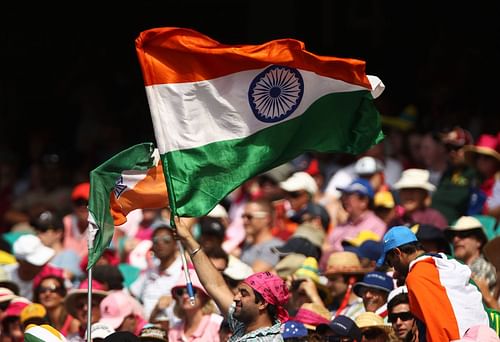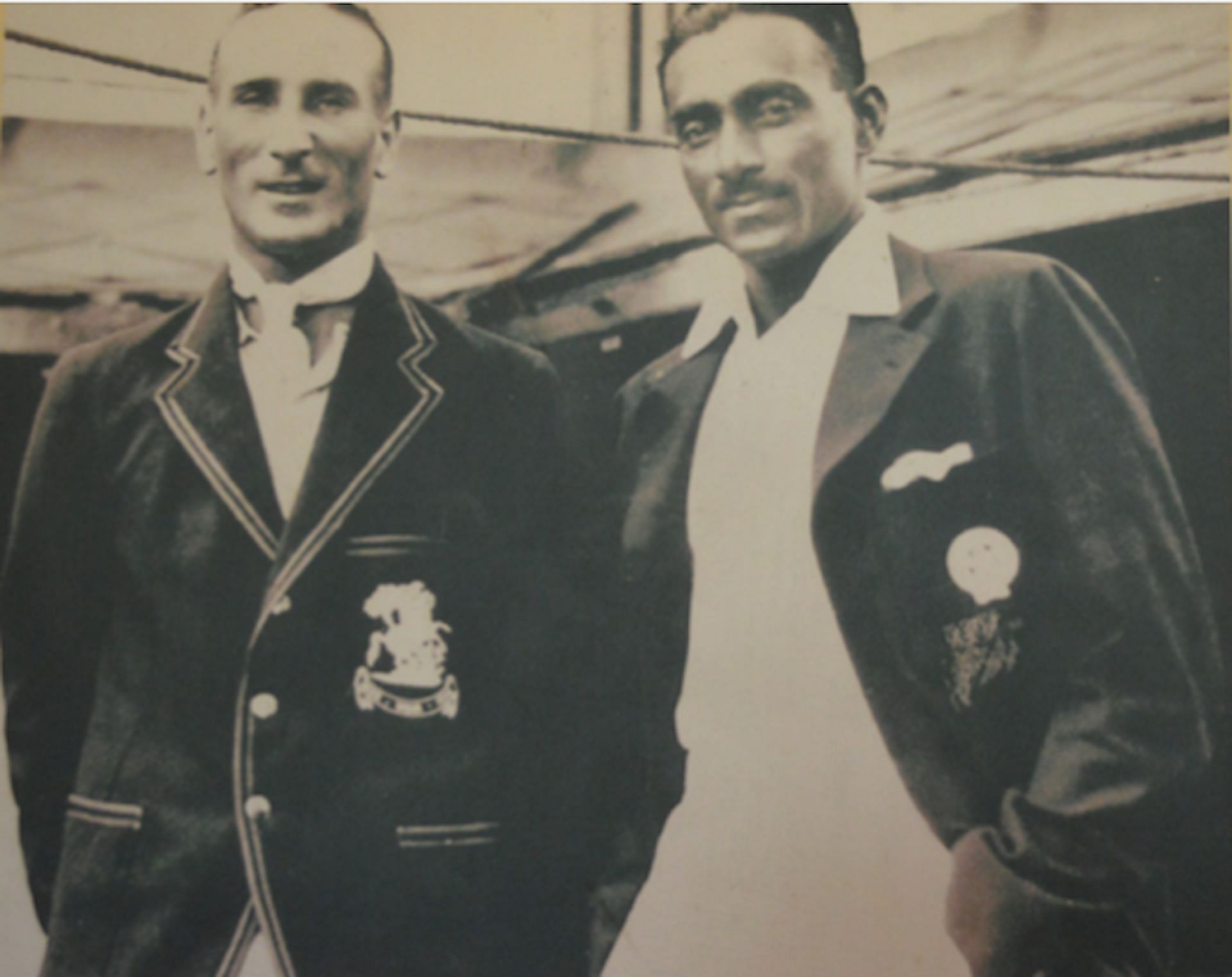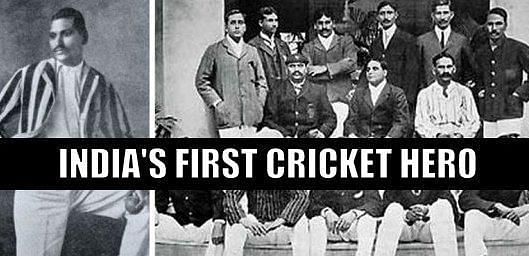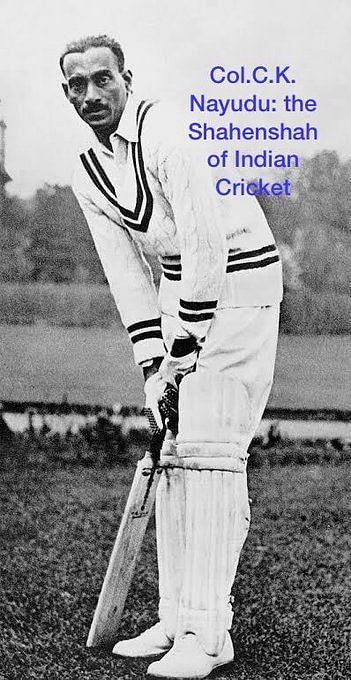
Indian Cricket at the time of the Freedom Movement

For a few decades now, the game of cricket has played its part in evoking a strong sense of patriotism among the Indians. Scenes of people on the streets with tricolor in their hands across the nation after victories in the 2007 T20 World Cup and 2011 ODI World Cup are still fresh in my mind. I do hear even more amazing stories of celebrations after the 1983 World Cup victory from people of that era who were lucky enough to witness history.
But who would have imagined that a game that was a gift of colonial rule to India would one day become country’s most popular sport?
Douglas Jardine, the man who led the Englishmen in India’s first ever Test in 1932, had once said that the day would come when India would be challenging other teams on equal terms on the cricket field. But I am sure even he wouldn’t have foreseen the magnitude of distance that this game has traveled in India.
Of course, most cricket fans in India know about the progress that has been made in the recent past. But have you ever thought about what it was like for cricket or the cricketers in the pre-independence era? When the nation was fighting the British to get their land back, surely there would have been more important things to worry about than a game played with a wooden plank and a leather ball.
Cricket was brought to India in the 18th century and the first cricket club (Oriental Cricket Club) was established in 1848 by the Parsis, but it took some time till an All-India team could be formed. It happened in 1911, when a team led by Maharaja Bhupinder Singh of Patiala went on a tour of England.
The star of the tour was spinner Palwankar Baloo, who took 114 wickets at an average of 18.86. As per Professor DB Deodhar, Baloo was no less than Wilfred Rhodes or Hedley Verity. He was probably the first great spinner to come out of India. But being a Dalit and labeled as untouchable in those days, he had his own struggles. His efforts on the cricket field were appreciated by caste activist Bhimrao Ambedkar.
Later, Baloo became important from a caste struggle perspective. He visited Mahatma Gandhi to discuss the Poona Pact while the latter was in Yerwada jail, Poona.
CK Nayudu and the knock which put India on the cricketing map
The next important milestone in India’s cricketing journey was the tour by the Marylebone Cricket Club (MCC) in 1926-27. It was the first time that an official cricket team from England was visiting India. This tour witnessed the innings that probably put India on the world cricket map. The protagonist was 31-year-old Col. CK Nayudu, who made 153 runs with the help of 11 sixes and 13 fours for the Hindus against the MCC at Bombay Gymkhana.
Many would like to believe that every hit to the boundary by CK (as he was called) was a dent in the crown of the British empire. It did a world of good for the confidence of the Indians. For the first time, the British were forced to take notice of the performance of an Indian. MCC skipper Arthur Gilligan commented on the knock:
“I cannot find enough words to express my opinion of him. His polished display of batsmanship was one of the best that I have ever seen."

Destined for greatness, Nayudu went on to become India’s first Test captain. With Test status, India’s steady march on the cricket field continued. But this march needed leaders as well as supporters and a lot of credit for the advancement of the game in the initial days goes to the Indian Maharajas who invested both money and time to get the ball rolling.
From a cricketing structure perspective, the one tournament which contributed significantly was the Quadrangular and later Pentangular tournaments in Bombay (now Mumbai). But as the teams in the tournament were based on religion, it had its critics. Mahatma Gandhi opposed it and said:
“I can understand matches between colleges and institutions, but I have never understood the reason for having Hindu, Parsi, Muslim and other communal Elevens.”
While Gandhi was against the tournament, it had its supporters as well. Mohammad Ali Jinnah didn’t see anything wrong in these cricket matches.
Once, when the Muslims had beaten the Hindus in 1924, Jinnah had remarked that even their Hindu brethren would rejoice in the Muslims’ success, in a spirit of true sportsmanship. The British writer Edward Docker commented:
“If ever India is to win communal unity, it will be on the cricket fields, and cricket fields of Bombay in particular.”
Nevertheless, with time, this tournament was replaced by the Ranji Trophy, having teams from different parts of India instead of on religious grounds. Today, the game is played across the length and breadth of the country with representations irrespective of a person’s cast, religion, or creed. We also have overseas cricketers trying their luck in the Indian Premier League (IPL).
Interestingly, the unofficial slogan of India’s team to England in 1932 was “No politics, no caste, just cricket.”
As we Indians celebrate the 75th year of independence, I will say that in no way can a game match the deeds of the freedom fighters who gave their life for the nation. We are what we are today because of them. At the end of the day, cricket is just a game.
But as Calcutta Mayor Late SK Basu stated:
“When the edifice of India’s swaraj was built, historians will take note of the contributions made by the politicians but also those made by sportsmen who would meet their British compeers on an equal ground in the cricket field.”
While the game still has issues that need attention, it has definitely come a long way and it does unite the country in a unique way.

